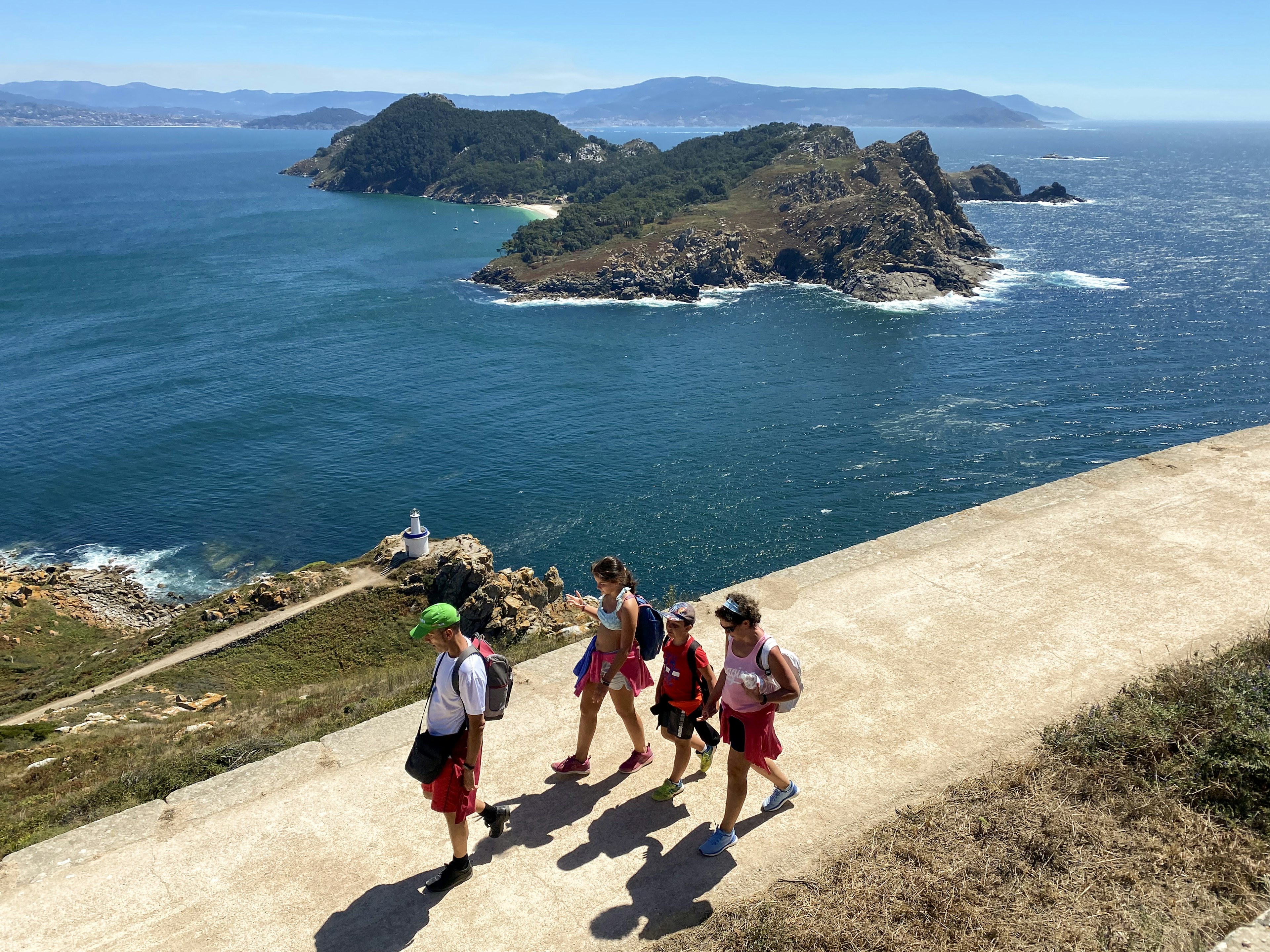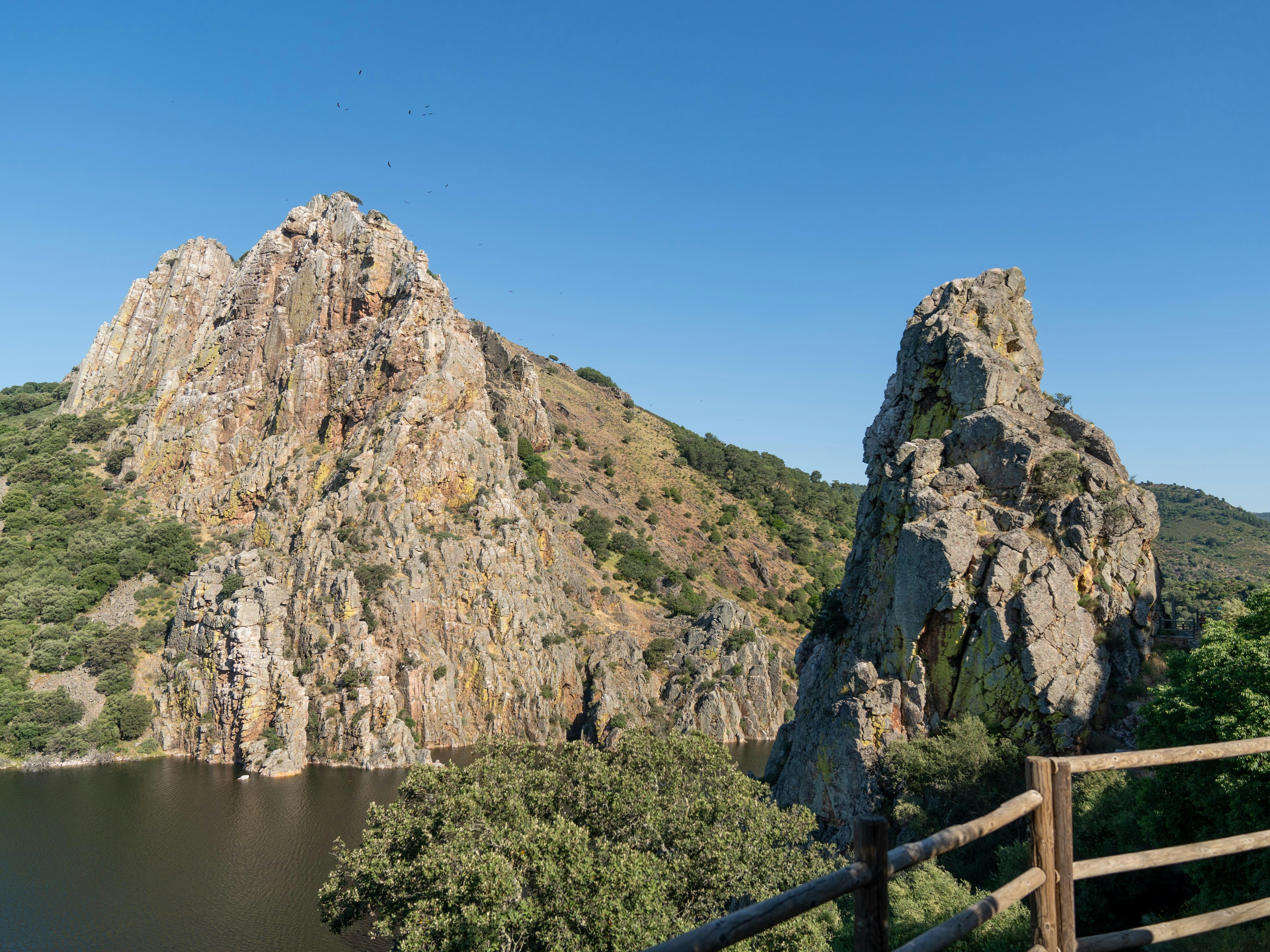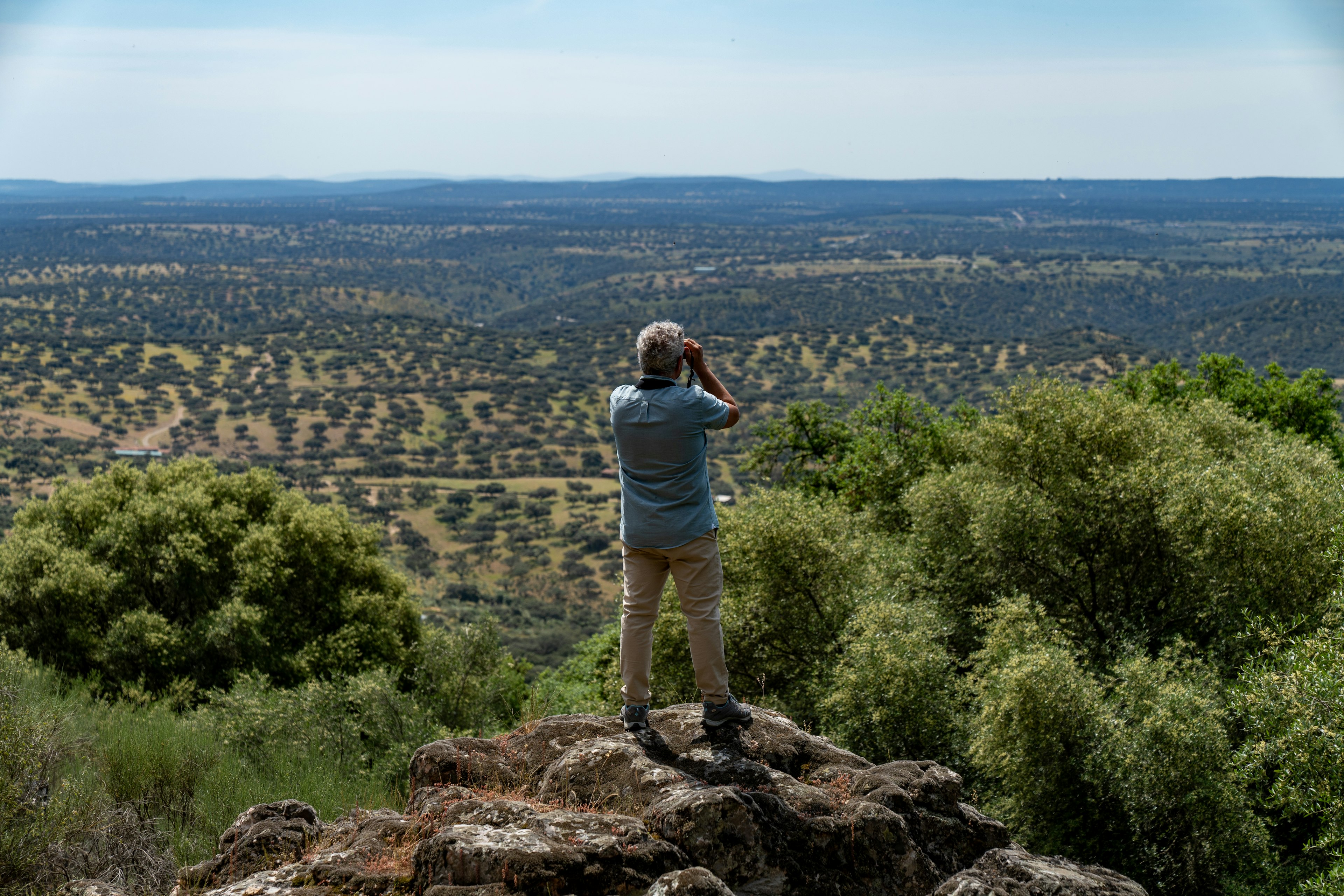From the snow-tipped Pyrenees and the jagged Picos de Europa in the north, to the wave-battered Islas Atlánticas to the west; from the Doñana wetlands, to Europe’s only desert in the Almería province; from the forest-covered mountains of Sierra de las Nieves and Sierra Nevada, to the sun-drenched volcanic peaks of the Canary Islands; Spain’s natural landscapes are striking in their sheer diversity and natural beauty.
Around one third of Spain comes under protected status, and its national parks showcase the best of the country’s natural bounty and success of conservation efforts. Spain’s rugged terrain is a playground for hikers, climbers, horseback riders and other fresh-air aficionados, while the country’s diversity of animal life is second to none, ranging from lynx, wolves and brown bears to Europe’s most prolific and varied birdlife.
Spain’s national parks
Straddling southeast Asturias, southwest Cantabria and northern Castilla y León, the 1918-founded, 260-square-mile Parque Nacional de los Picos de Europa – Spain’s first national park – comprises some of Spain’s (and Europe’s) most spectacular mountain scenery. Dominated by 8,000-foot peaks Macizo El Cornión, Macizo Ándara and Macizo Central, its dramatic limestone crags loom above sparkling lakes and mountain meadows, with the sheer rock faces plunging dramatically down into precipitous river gorges. The park’s natural bounty is accessed via an extensive network of signposted hiking trails; August is the busiest of the summer months, while during winter you’re likely to have the national park more or less to yourself.

Battered by Atlantic waves, Parque Nacional de las Islas Atlánticas encompasses four small archipelagos off the windswept coast of Galicia: Illas Cíes, Ons, Sálvora and Cortegada. The stars of the show are three Illas Cíes, two of them forming a natural breakwater that protects one of Spain’s loveliest white-sand beaches from the Atlantic’s fury. Once you’re there, the well-trodden footpaths to the lofty lighthouse and other viewpoints make for excellent day walking. Further north, quieter Illa de Ons features several sandy coves and a network of gentle trails. Between 15 May and 15 September, there’s a cap on the number of day visitors, so booking visitors’ permits online and ferry tickets to Illa de Ons weeks in advance is essential, particularly for July and August.
The deep canyons, mountain lakes, thick forest, waterfalls, and dragon’s back of limestone peaks that make up Spain’s joint-oldest national park, Aragon’s 60-square-mile Ordesa y Monte Perdido, rival the Picos de Europe when it comes to natural beauty, yet it receives a fraction of the Picos’ foot traffic.
Further east, Catalonia’s rugged 55-square-mile Parque Nacional Aigüestortes i Estany de Sant Maurici is another slice of alpine beauty, its mountain meadows, forests, granite peaks and more than 200 lakes forged by glacial action over two million years.
Just north of Madrid lies the 130-square-mile Parque Nacional Sierra de Guadarrama, the only wilderness in Spain comprising high Mediterranean mountains and forests that shelter the Iberian ibex, roe deer and the golden eagle. Hiking aside, there are several small ski resorts, as well as the impressive 15th-century Castillo de los Mendoza in the region’s main town of Manzanare El Real.

Heading west, Extremadura’s hilly, dramatic 70-square-mile Parque Nacional de Monfragüe straddles the Tajo River valley and is particularly rich in bird life: its 175 feathered species include black vultures, the Spanish imperial eagle and black stork. Deer, badgers, wild boar and otters are often spotted while hiking from the pretty hamlet of Villareal de San Carlos.
South of Madrid, in Castilla-La Mancha, the vast grasslands, mountains, and holm-oak and cork-oak forests of 390-sq-km Parque Nacional de Cabañeros, a.k.a. ‘Spain’s Serengeti’, shelter roe deer, wildcats and assorted raptors. Also in Castilla-La Mancha, the pocket-sized, 8-square-mile Tablas de Damiel protects one of Spain’s last remaining floodplains, a vital habitat for endemic and migrating bird species, with ducks, geese, kingfishers, flamingos and herons spotted from boardwalks and observation hides.
In Andalucía, the vast coastal wetlands of the 230-square-mile, World Heritage-listed Parque Nacional de Doñana shelter the elusive lynx and a cornucopia of bird life; the mountains of 140-square-mile Parque Nacional Sierra de las Nieves are clad in Spain’s only remaining pinsapo (ancient fir tree) forest, while the precipitous peaks of the majestic 330-square-mile Parque Nacional Sierra Nevada are an irresistible lure for trekkers.
More than 40 percent of the Canary Islands are protected natural spaces. That includes four national parks – the most of any region in Spain – representing a mix of fantastical, varied landscapes. Walk through the eerily beautiful laurel forests of La Gomera’s Parque Nacional de Garajonay, or gaze over the unworldly and tortured landscape of Lanzarote’s Parque Nacional de Timanfaya, a splendid natural canvas of shimmery grays, earthy reds and pops of pine-green clashing against the brilliant-blue sky.
Hiking along the Ruta del Cares is a popular way to see the Picos de Europa. ©Coke Bartrina for Lonely Planet
Best for outdoor sports
Dominated by 11,500-foot Mulhacén, the highest peak in mainland Spain, Andalucia’s Parque Nacional de Sierra Nevada features spectacular hiking – from two long-distance trails, and ascents of its most challenging crags, such as Mulhacén and Alcazaba, to moderately taxing rambles between the picturesque villages of the Alpujarras valleys. Outdoor operators arrange adrenaline-packed via ferrate and canyoning excursions, plus horseback adventures along centuries-old muleteer trails. Sierra Nevada also boasts the highest skiing resort in Europe, with powder action between late November and April.
In the Pyrenees right by the border with France, Parque Nacional Ordesa throws down a gauntlet to serious hikers who come to summit the challenging 11,000-foot Monte Perdido that towers over dramatic glacial valleys. Other popular hikes from Pradera de Ordesa include the day hike to the Circo de Cotatuero, a powerful waterfall, while Torla is the epicenter of exhilarating white-water rafting action.
Small but perfectly formed, Parque Nacional Sierra de las Nieves welcomes hikers outside the nieve (snow) months of January to March. The towns of El Burgo and Tolox make good hiking bases, and top hikes include the ascents of the 6,300-foot Torrecilla peak and the Cañada de los Cuernos gully to the high pass of Puerto de los Pilones.
The Picos de Europa cater to hikers of all abilities with dozens of trails, ranging from easy strolls around the Lagos de Covadonga to the tough high-mountain three-day route known as GR 202 that bisects the park, with the super-popular hike along the jaw-droppingly beautiful Cares gorge falling somewhere in between. Outfitters in Cangas de Onís, Potes and beyond offer rock-climbing, horse-riding, caving and canyoning, while Arriondas is the most popular kayaking base.
The pine- and fir-bedecked glacial valleys of Parque Nacional Aigüestortes i Estany de Sant Maurici makes for fantastic high-country hiking, whether it’s the 19-mile-long Espot–Boí traverse or shorter ascents to the likes of Estany Gran d’Amitges (7,800 feet) or the Estany de Monestero (7,200 feet).


Best for wildlife
The world’s most endangered wild cat species, the Iberian lynx (lince ibérico) has bounced back from the brink of extinction thanks to a captive-breeding program. Now there are more than four hundred in the wild, some found in Extremadura’s Parque Nacional de Monfragüe, and the majority spread across Andalucía’s Parque Nacional de Doñana; you’ll have to be lucky to spot these nocturnal creatures on guided tours.
Similar numbers of brown bears (oso pardo) are spread across the Cordillera Cantábrica (Cantabria, Asturias and northern Castilla y León) with a small population on the rise in the Pyrenees. Thanks to intensive conservation measures; they are occasionally seen in the Picos de Europa.
Spain’s 2,200 to 2,700 Iberian wolves (lobos ibéricos), are found in small populations across northwestern Spain, including the Picos de Europa, though the densest concentration is in the Sierra de Culebra, southwest of León.

Spain’s varied ecosystems are a haven for the biggest and most varied bird population in Europe, including around 25 species of birds of prey. The mountains and woodlands of Parque Nacional de Monfragüe are home to 280 bird species and are the best place in the country to spot the golden eagle (águila real), griffon vulture (buitre leonado) and Egyptian vulture (alimoche), as well as western Europe’s only breeding population of the black stork (cigüeña negra).
Huge flocks of flamingos turn the skies pink above the extensive wetlands of Parque Nacional de Doñana – a vital stop on the Africa-Europe flyway for migrating species, while Galicia’s Islas Atlánticas provides a stopover for the great cormorant, the northern gannet and the razorbill, and a home for the largest colony of yellow-legged gulls in the world, as well as the European shag and the storm petrel.
As all of this diverse wildlife thrives within Spain’s national parks, it stands as a testament to the commitment to preserving these natural treasures.
